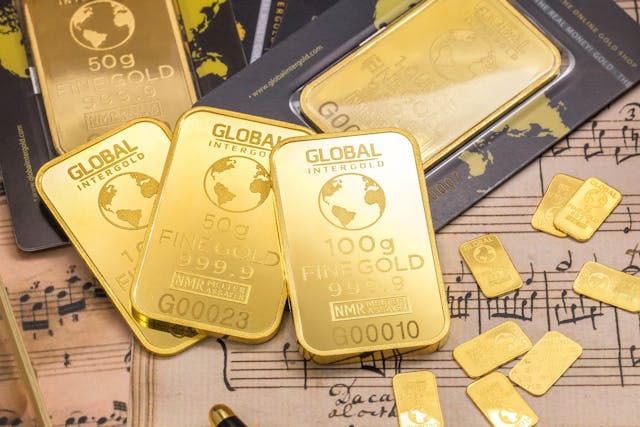Gold, a beacon of stability in the volatile market, is again making its mark, maintaining its support above the $2300 an ounce level. The precious metal is steadily regaining the ground lost last week, its outlook and sentiments bolstered by a weakening US dollar. The precious metal benefits from the greenback, being on the receiving end in the aftermath of US jobless claims for the week ended May 3, jumping by 231,000, the highest level since August 2023.
Interest Rate Cut Push
The jump in jobless claims in the US fuels optimism of a loosening labor market that has been strong for the better part of the year. A strong labor market is one factor that has forced the US Federal Reserve to stay put on potential interest rate cuts, insisting that the US economy remain resilient amid THE soft landing concerns.
The US central bank has had pushback on calls to cut interest rates, concerned by inflationary pressures struggling to drop below the recommended 2% level. With the FED remaining put on cuts amid labor market resilience, the US dollar has strengthened across the board, all but affecting gold prices in the market.
Nevertheless, the US dollar remains under pressure in the second week of the month as a weakness in the labor market, with a surge in jobless claims signaling that the US economy may not be as resilient as thought. Further weakness in the labor market should fuel optimism for interest rate cuts, leading to further dollar weakness and benefiting gold prices.
Gold prices have since powered through the $2370 an ounce level rallying to nearly three weeks highs. The yellow metal remains well supported for further price gains above the $2350 an ounce level, which could see it power through the psychological $2400 an ounce level.
Gold Price Catalysts
Gold is up by more than 12% for the year, having benefited from interest rate cuts talk. Nevertheless, the soaring geopolitical tensions in the Middle East have also fuelled a strong demand for precious metals, often seen as a safe haven in geopolitical uncertainties.
With the Israel-Hamas conflict far from over, with Israel threatening further actions in the aftermath of the Iran attacks, the precious metal should continue to elicit strong demand as a store of value. Israel’s invasion of Rajah as it continues to move civilians threatens to trigger a widespread Middle East conflict as ceasefire talks with Hams stall. The bullion should remain attractive should there be signs that the Middle East conflict is far from over.
Strong Chinese demand has also fuelled the 12% jump in gold prices. In the aftermath of the Chinese economy struggling from the Covid-19-engineered slowdown, demand for the precious metal has skyrocketed as people see it as a hedge against deteriorating economic conditions. The country’s central bank topped its gold reserves for an 18th consecutive month in April, even though the buying pace slowed.
While China mines more gold than any other country, it still imports a lot, creating a deficiency and increasing prices. Over the past two years, the Chinese central bank has purchased over 2,800 tons, more than the metal that backs most exchange-traded funds worldwide. Imports were up by more than 50% in the first two months of the year in the run-up to the Lunar New Year peak season.


